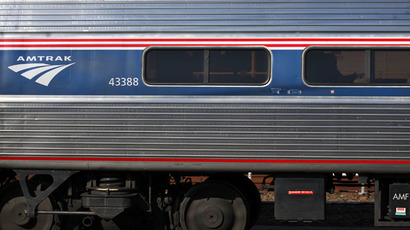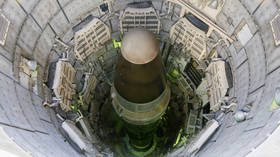‘Distraction to disaster’: Deadly Amtrak crash caused by preoccupied engineer

The deadly Amtrak crash that killed eight people and injured hundreds in Philadelphia last year came about because the train’s engineer became distracted by incoming radio calls, federal investigators said on Tuesday.
Train engineer Brandon Bostian said that he didn’t realize where his train was when he became distracted by a radio report stating that another locomotive’s windshield had been shattered by a rock, according to federal investigators at the National Transportation Safety Board.
As a result, Bostian lost track of his location and said he sped up to 106 miles per hour – far above the maximum of 50 miles per hour needed to safely pass through the curve on that part of the track.
“He went, in a matter of seconds, from distraction to disaster,” NTSB board member Robert Sumwalt said, as quoted by the Associated Press. The crash of Amtrak 188 caused the death of eight people, as well as approximately 200 injuries.
Investigators were initially concerned that the train may have been hit by a rock or some other projectile. They later determined that this hadn’t occurred, but an NTSB report showed that Bostian told investigators that he learned that another train had been hit by something.
“He reported that rocks had hit his windshield,” Bostian said during that interview, according to an NTSB transcript cited by USA Today. “The dispatcher asked him a couple of times if he needed medical attention. He didn’t answer directly and so, they went back forth a few times.”
Most of the details Bostian was able to provide to investigators related to this radio communication. He described his recollection of the incident as “dreamlike” or “very foggy,” adding that there are “several gaps” in his memory.
According to CNN, investigators did not find any evidence that Bostian had been using drugs, alcohol, or a cell phone at the time of the crash.
Blood on the tracks: Amtrak’s 5 most recent accidents https://t.co/6xw8GAkdcppic.twitter.com/fl9WJKov8l
— RT America (@RT_America) April 4, 2016
Much of the prevention-based discussion since the May 2015 crash has centered on positive train control technology. Tracks equipped with this capability can automatically slow trains down as they approach stretches where lower speeds are required, but it had not been installed along the stretch where Amtrak 188 derailed.
“Based on what we know, had such a system been installed in this section of track, this accident would not have occurred,” said Sumwalt, according to the New York Times.
In the wake of the accident, Amtrak announced it would also be outfitting dozens of trains with inward-facing security cameras to help ensure safety and aid in future investigations.













